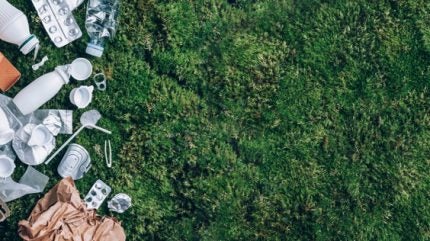
As concern for the environment continues to grow, more consumers and businesses are rethinking how products are packaged. A major part of this conversation revolves around packaging substrates—the materials used to produce the packaging itself.
From paper and cardboard to plastics, metals, and bio-based materials, each substrate has its own environmental impact. But which of these materials stands out as the most sustainable?

Discover B2B Marketing That Performs
Combine business intelligence and editorial excellence to reach engaged professionals across 36 leading media platforms.
Understanding which packaging substrates offer the lowest carbon footprint, highest recyclability, and least harm to ecosystems can help drive smarter choices across the supply chain. Below, we explore the top contenders, assessing their pros and cons in terms of sustainability.
Paper and cardboard: renewable, recyclable, and widely accepted
Paper-based packaging is often held up as one of the most eco-friendly options available. Sourced from trees, paper and cardboard are both biodegradable and recyclable, making them a renewable and circular solution when sourced responsibly.
With the right forestry practices, trees can be replanted and grown to offset the raw material use, which significantly reduces the environmental toll compared to fossil-based alternatives.
One major advantage of paper packaging is its high recyclability. In many countries, infrastructure for paper recycling is well-established, with a recovery rate in Europe and North America reaching over 70%.

US Tariffs are shifting - will you react or anticipate?
Don’t let policy changes catch you off guard. Stay proactive with real-time data and expert analysis.
By GlobalDataCorrugated cardboard boxes are especially efficient in this regard, as they are typically reused multiple times before being recycled.
However, paper isn’t perfect. Producing it still requires water, energy, and sometimes chemicals—particularly in bleaching processes. If paper is coated in plastic or mixed with other non-paper materials, it can be difficult to recycle.
And if sourced from poorly managed forests, paper can contribute to deforestation and biodiversity loss.
Still, for lightweight items, dry goods, and many e-commerce shipments, paper and cardboard remain a leading sustainable packaging material. They strike a good balance between performance, availability, and low environmental impact.
Plastics: efficient but problematic without circular systems
Plastic packaging has long been criticised for its environmental impact, largely because it is derived from fossil fuels and can persist in nature for hundreds of years.
Despite this, not all plastics are equally unsustainable, and when managed correctly, some plastic substrates can perform well in terms of carbon footprint and resource efficiency.
From a sustainability perspective, plastic is highly efficient in material use. It is lightweight, which reduces transport emissions, and it provides excellent protection, helping to reduce food waste—an often overlooked environmental issue.
High-density polyethylene (HDPE) and polyethylene terephthalate (PET) are among the more recyclable plastics, especially when collected and sorted properly.
The problem lies in disposal and recycling. Globally, only around 9% of plastic packaging is recycled, with much ending up in landfill or the ocean. Single-use plastics are a key contributor to environmental pollution.
Moreover, many plastic films and multi-layer substrates are not easily recyclable through existing systems.
Innovation is helping to shift this picture. Advances in chemical recycling, bio-based plastics derived from plants, and mono-material designs are improving plastic’s sustainability profile.
However, unless these technologies scale and circular systems become more widespread, plastic will remain one of the least sustainable substrates overall.
Bio-based and compostable materials: promising but limited by scale
A new wave of plant-based packaging substrates is emerging as a potential solution to packaging waste. These include materials made from corn starch, sugarcane, algae, and agricultural waste.
Unlike conventional plastics, many bio-based materials are compostable under the right conditions, breaking down into natural elements within weeks or months.
Polylactic acid (PLA), for example, is a compostable plastic substitute derived from renewable resources like corn. It looks and feels like traditional plastic but is industrially compostable.
Another option, mushroom packaging, uses agricultural waste and mycelium to create a biodegradable alternative to styrofoam.
However, these materials face several challenges. Most require industrial composting facilities, which are not yet widespread. If compostable packaging ends up in general waste or recycling bins, it can contaminate recycling streams or fail to decompose properly in landfill. There is also debate around using agricultural land for packaging rather than food.
Moreover, while promising, bio-based substrates are still relatively niche and can be more expensive to produce at scale. Their long-term sustainability will depend on infrastructure development and careful lifecycle assessments.
Making the most sustainable packaging choice
There is no single “perfect” packaging material, but paper and cardboard generally rank as the most sustainable substrates today—particularly when sourced from responsibly managed forests and kept within a recycling loop.
Plastics, while efficient in certain uses, face significant sustainability challenges unless recycling rates improve dramatically. Bio-based and compostable materials offer exciting alternatives but require further development and infrastructure to become mainstream.
The most sustainable choice often depends on context: what’s being packaged, how it’s being shipped, and what disposal options are available locally.
Ultimately, moving towards circular design principles—reducing material use, reusing where possible, and ensuring recyclability—will matter more than any one substrate alone.
As demand grows for low-impact packaging, businesses and consumers alike have a role to play. Prioritising materials with low emissions, supporting robust recycling systems, and choosing packaging that’s easy to reuse or recycle are all key to reducing environmental harm.





